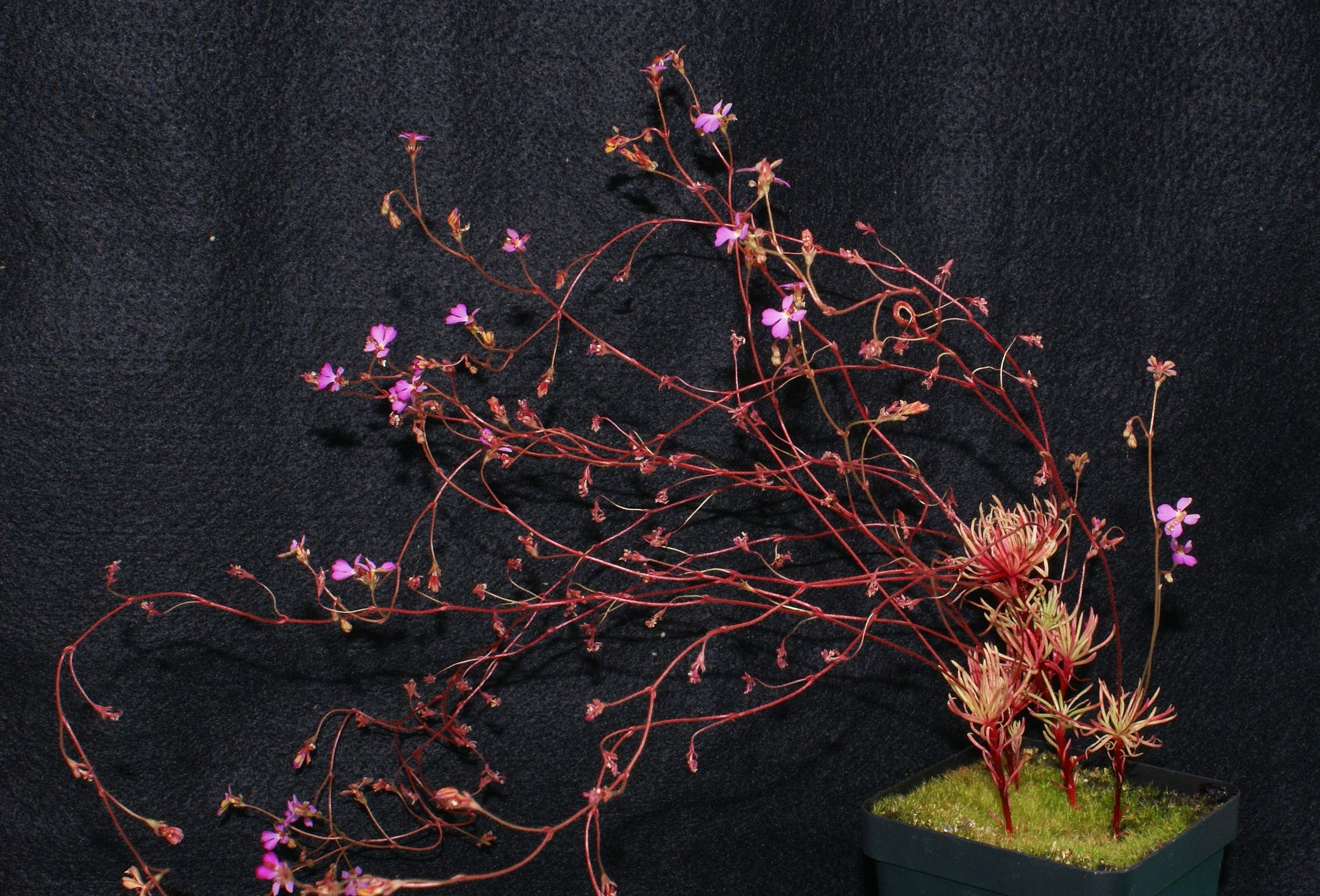Although Stylidiaceae does not have a common name, most of this family’s approximately 300 species are known as triggerplants. They are typically small, grass- or shrub-like plants, often with scapes, that are native to Australia and New Zealand. They are characterized by their unique floral parts that respond to touch, vibrating to facilitate cross pollination and avoid self-pollination. They often have small hairs that catch drops of dew or small insects—these hairs are called glandular trichomes.

The Triggerplants (Stylidium genus)
Most of the triggerplants are found only in Australia—in fact, it is the fifth largest genus of plants there. They are common in sandy habitats, heaths, swamps and creek banks, and eucalyptus woodlands. The triggerplants are diverse and range from the very small (on the scale of centimeters) to the large (6 feet tall). The triggerplants are so called because their unique reproductive structure, the floral column, is a sensitive “trigger” that responds to touch, snapping forward quickly in response to physical stimuli from insects, which results in covering the insects in pollen. The whole process can happen in as little as 15 milliseconds. After flying, the column resets to its original position in as little as a few minutes to a half hour. Self-pollination in the flower is prevented because the male reproductive part, the anther, develops before the female reproductive part, the stigma, thereby ensuring that the plant pollinates with other plants rather than with itself. Typical pollinators are solitary bees and beeflies.

The small hairs, or glandular trichomes, that cover the scapes and flowers are able to trap and kill insects using enzymes produced by the plant. However, it has not been confirmed whether these plants actually digest the insects that they capture—which would make them carnivorous. The purpose of trapping the insects could be simply to prevent insect damage. Classifying triggerplants as carnivorous would greatly increase the number of carnivorous plants known worldwide, but research has not yet confirmed whether the triggerplants are, in fact, carnivorous.

Many triggerplants could be suitable as houseplants or cultivars worldwide. These plants tend to be hardy to cold and drought and are easily cultivated in greenhouses or gardens. Some species require a cold dormancy period or a smoke treatment that simulates a bushfire. The International Triggerplant Society shares and supports research on this fascinating plant group.
The Styleworts (Levenhookia genus)
Closely related to the triggerplants are the styleworts, the other main genus of this family. They are endemic to (mostly Western) Australia. They also have a floral component that responds to pollinators’ touch to encourage cross pollination and avoid self-pollination, and they have the glandular trichomes. Styleworts are mostly ephemerals that prefer sandy, heath habitats.

Cushionplants (Donatia, Forstera, and Phyllachne genuses)
The remainder of plants in this family consist of cushionplants: small, ground-hugging plants. Donatia fascicularis is dominant in cushion bogs bordering the Pacific Ocean in alpine and subalpine regions of Patagonia and Tierra del Fuego. The species of the Forstera and Phyllachne genus are endemic to New Zealand and Tasmania; the perennial yellow cushionplant (Phyllachne colensoi) is often the main vegetation in upload bogs in high-altitude mountains of New Zealand.




The plants in the Stylidiaceae family are quite unlike many we encounter in the Midwest or really any U.S. environment. Who would have thought that plants that hug cool, windswept alpine habitats share kinship with plants that trap and possibly supplement their diet with insects? Australia and the surrounding islands are particularly interesting in their biological diversity. If you are looking for a TV gardening show to inspire the housebound gardener mind of yours this winter, I highly recommend Gardening Australia. Although much of what grows there is vastly different than what we grow here, that’s part of the fun!


